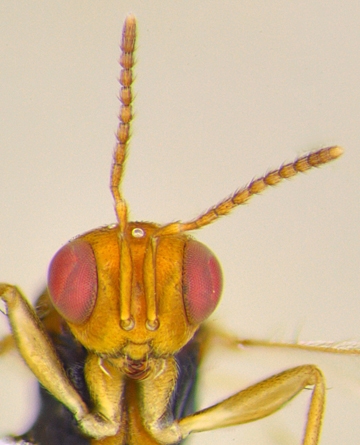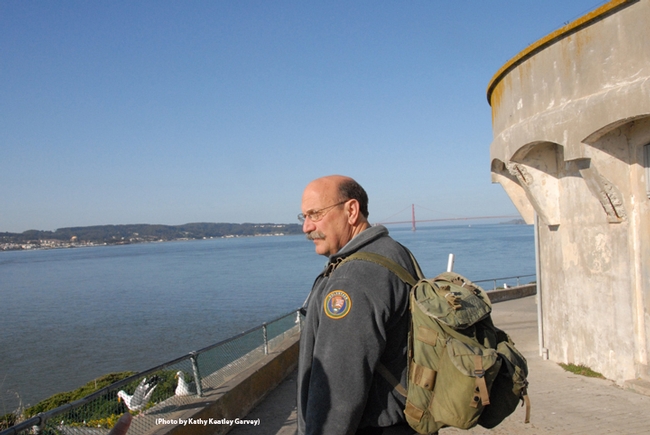
Naming our son was easy. We opted for family names handed down 200 years ago.
A puppy? When we acquired a half-St. Bernard, half-German Shepherd mix (the same breed as Buck in Jack London's Call of the Wild), that was easy, too. The puppy insisted on eating the daisies, so...ta-dah.."Daisy."
Kitten? We named our calico kitten, "Indiana Joan," heralding her adventuresome personality that included--but was not limited to--falling into the fish pond. Fast forward to 15 years later. A woman is holding a "Free" sign outside a supermarket and inside a cardboard box is a frightened tuxedo kitten about to be taken to a shelter. We did not name her "Free." Since she proved to be a mix of princess (loves to cuddle, and still does) and warrior (loves to hunt rodents, and still does), she became "Xena, the Warrior Princess."
But how do you name an insect? It's not as simply as "Daisy" or "Indiana Joan" or "Xena the Warrior Princess."
That's why you should attend the Bohart Museum of Entomology open house from 1 to 4 p.m., Sunday, May 17 in Room 1124 of the Academic Surge Building on Crocker Lane.
The theme is "Name That Bug! How About Bob?"
Bob is a very good name. Just ask forensic entomologist Bob Kimsey of the UC Davis Department of Entomology and Nematology, and his wife and colleague, Lynn Kimsey, director of the Bohart Museum and UC Davis professor of entomology.
And at least one big box supermarket is quite fond of "Bob." Ever noticed the sign, "Remember BOB?" at the cash register? That clues the cashier to check "Bottom of the Basket (BOB)."
So, when you attend the Bohart Museum of Entomology open house on May 17, you'll meet and chat with taxonomists and other scientists at the Bohart Museum and the California Department of Food and Agriculture who will explain how insects are named. There also will be family arts-and-crafts activities. The event is free and open to the public.
It's good to know that you, too, can name insects. The Bohart Museum sponsors a nonprofit Biolegacy Program, an opportunity to name an insect after yourself or a loved one. For example, there's a new wasp species named “The Bockler Wasp," thanks to a concerted drive to memorialize a beloved and award-winning high school biology teacher.
When the retired science teacher, Donald “Doc Boc” Bockler of Arlington (Mass.) High School, died at age 65, two of his former students from the Class of 1993--Tabatha Bruce Yang of the Bohart Museum and Margaret Dredge Moore of Arlington--launched a fundraising drive to name an insect after him. They selected a newly discovered species in the genus Lanthanomyia and sought the name, Lanthanomyia bockleri.
Senior museum scientist Heydon recently published his work on Lanthanomyia bockleri Heydon in Zootaxa, a worldwide mega-journal for zoological taxonomists and the name is now official.
“Once an article goes through the scientific review process and is published in a peer-reviewed scientific journal, the name of the new species is official and immortalized in the scientific literature,” explained Kimsey.
Kimsey described species-naming as “a unique, lasting form of dedication” and “a great honor both for the person giving the name and for the individual or other honoree whose name is being given to the species.”
Heydon explained that Lanthanomyia is a genus whose species are restricted to central and southern Chile and adjacent parts of Argentina. The new species is found in the Nothofagus forests of Patagonian Chile, including Chiloe Island. It belongs to a family of parasitic wasps called the Pteromalidae. “Unlike other related species, this one has a unique dorsal attachment of the head to the thorax," Heydon said. "If you see a specimen of Lanthanomyia with the neck attaching close to the top of the head, you know it is bockleri. Adults are reared from galls on Nothofagus and are thought to be parasites of gall-forming weevils.”
“Donald Bockler was fascinated by evolution and nature and he would have been proud,” said Yang, education and outreach coordinator at the Bohart Museum. Like many other Bockler students, she credits him for influencing her decision to pursue a career in science. For more information, and to obtain a list of species available for naming, contact bmuseum@ucdavis.edu.
The Bohart Museum, founded by noted entomologist Richard M. Bohart (1913-2007), houses a global collection of nearly eight million specimens. It is also the home of the seventh largest insect collection in North America, and the California Insect Survey, a storehouse of the insect biodiversity.
The Bohart Museum's other special attractions include a “live” petting zoo, featuring Madagascar hissing cockroaches, walking sticks and tarantulas. Visitors are invited to hold the insects and photograph them. A crowd favorite is a rose-haired tarantula named "Peaches."
The museum's gift shop, open year around, includes T-shirts, sweatshirts, books, jewelry, posters, insect-collecting equipment and insect-themed candy.
The Bohart Museum's regular hours are from 9 a.m. to noon and 1 to 5 p.m. Mondays through Thursdays. The museum is closed to the public on Fridays and on major holidays. Admission is free. Open houses, focusing on specific themes, are held on weekends throughout the academic year.
The next open house is "Moth Night," set from 8 to 11 p.m., Saturday, July 18 on the Bohart Museum grounds. Participants will learn how to collect moths and identify them.
Want more information on the Bohart Museum? Contact Tabatha Yang at tabyang@ucdavis.edu or (530) 752-0493.
Attached Images:
